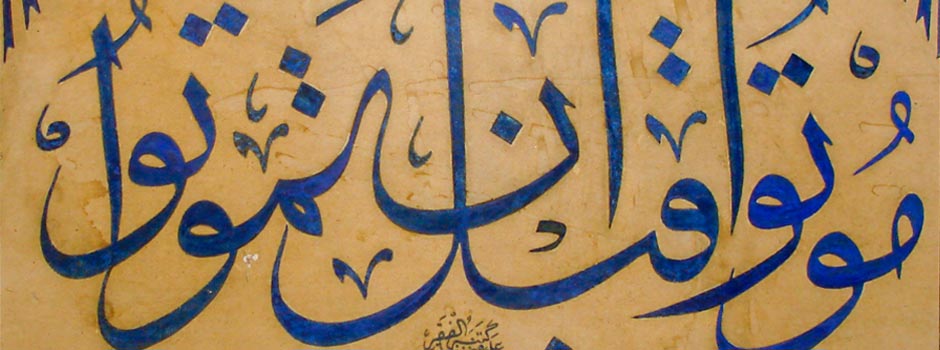
CALLIGRAPHY Three Most Important Calligraphy Schools in Bosnia in 19th Century
May 29, 2019 TRADITION, Calligraphy

This article is part of the project 'Promotion of the Ottoman Cultural Heritage of Bosnia and Turkey' which is organized by Monolit, Association for Promoting Islamic Arts and supported by the Republic of Turkey (YTB - T.C. BAŞBAKANLIK Yurtdışı Türkler ve Akraba Topluluklar Başkanlığı / Prime Ministry, Presidency for Turks Abroad and Related Communities).
Studying calligraphy in Bosnia always had a strong institutional frame. There were many well educated but also hastily trained calligraphers and the works of all of them are preserved in various collections. However, today we know only a few schools that had greater influence. Calligraphy was studied in madrasas, but also in private schools/workshops founded by the best masters, that become the centres of its expansion. Even the selections of students was strict. The students of these schools were becoming individual artists or employees of the official administration where their art of penmanship was highly appreciated. With time, the private calligraphic schools were becoming intellectual circles where the work on affirmation of cultural values of Bosniaks was intensive. Typical example of such culture worker was Mehmed Beg Kapetanovic Ljubusak, whose personage and work may be classified in the artistic and literal history of our country. The calligraphic schools were in a way a direct answer to the new education system that suppressed this type of art education. In the second half of the 19th century, calligraphy was becoming extensively exclusive art and the percentage of the new students was decreasing. However, what distinguished it as the peak of the Bosnian spirit at the time of the crisis is the exceptional quality and huge talent of some artists whose works presented the top of what calligraphy could offer at that time. The quality of their works did not at all fall behind of what could be seen in Istanbul. Chronologically, the three most important schools in 19th century were founded by Abdullah Ajni Hasagic, Husein Rakim Effendi Islamovic and Ali Serif Faginovic.
Today we know very little about Hasagic and his school, but it seems that it was a base for founding the other schools, because the students of Hasagic were following the calligraphic tradition and later founded private schools. Hasagic was mystified personage but also the central figure of the artistic scene in Sarajevo at that time. Besides calligraphy, he was also engaged in poetry on Turkish language. His talent for pedagogy and his ability to transfer the knowledge were exceptional, remaining the authority even for the students that achieved successful carriers and exceeded their teacher in many things later on. He knew several calligraphic styles and his distinguished students to whom he issued the ijazetnama (diploma) were: Husein Rakim Effendi Islamovic, Behaudin Sikiric, Akif Hadžihuseinovic (Muvekit), Sulejman Cucak, Mustafa Cadordzija and others. Hasagic died in Sarajevo in 1872 leaving the immeasurable influence on the later development of calligraphy in Bosnia.
The second important school was founded by Husein Rakim Effendi Islamovic who was Hasagic's student, born in Sarajevo in 1839. It seems that the knowledge and experience acquired in the Hasagic school inspired the young artist to continue his calligraphic education in Istanbul with the greatest Ottoman masters of that time. He stayed in Istanbul for a number of years acquiring the knowledge from Mohammed Hulusi, Mohammed Sevki, Mohammed Tefki, Jahja Hilmi, Ali Hajdar Hafidi Melek Pasha, Mohammed Arifi and others. The mentioned calligraphers presented the top of the Istanbul scene of that time. By studying calligraphy from such artistic greatness secured Islamovic the cult status in Bosnian art history. He was often highlighted by many authors as our best calligrapher and his manually written diplomas in thuluth, naskh and taliq scripts are considered today as models of calligraphic art. After very fruitful period in Istanbul, Rakim returned to his native Sarajevo where he founded his own school.
 Husein Rakim Effendi Islamovic, ijazetnama, Gazi Husrev Beg Library, Sarajevo / Photo © Islamic Arts Magazine
Husein Rakim Effendi Islamovic, ijazetnama, Gazi Husrev Beg Library, Sarajevo / Photo © Islamic Arts Magazine
The last calligraphic school appeared on the transition between 19th and 20th century. Its founder was Ali Efendi Serif Faginovic. Although at that time, Bosnia was formally under ruling of Austro-Hungarian monarchy that tried to impose new habits and present the European cultural inheritance as better and more advanced than the Ottoman and Islamic one, Bosniaks were still loyal to the Islamic forms of the artistic expressions. The school of Ali Effendi Serif Faginovic was very popular and influential. He owned ijazetnama, but it is not known where exactly he studied calligraphy. It is very important to remark that three generations of famous artists came from family Faginovic. The first one was Mustafa, grand-father of Ali, whose duty, during his artistic career, among other things, was to decorate the Sultan Ahmed Mosque (Blue Mosque) in Istanbul. The father of Ali, also Mustafa, was engaged in wall painting and he is the author of famous pictures of Mecca and Medina on the walls of the Miscina Mosque in Sarajevo. Mustafa died in Istanbul in 1900. Unlike them, Ali was dedicated to calligraphy exclusively. He knew very well Arabic, Turkish and Persian language. We can conclude that he was a connoisseur of the oriental literature and tesawuf. Among the scripts he was best in thuluth and taliq style.
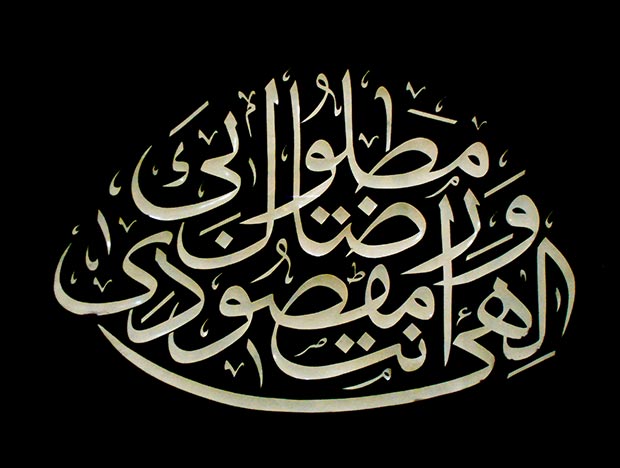 Ali Efendi Serif Faginovic, Calligraphic panel, collage, letters were cut from fabric, Bosniak Institure, Sarajevo / Photo © Islamic Arts Magazine
Ali Efendi Serif Faginovic, Calligraphic panel, collage, letters were cut from fabric, Bosniak Institure, Sarajevo / Photo © Islamic Arts Magazine
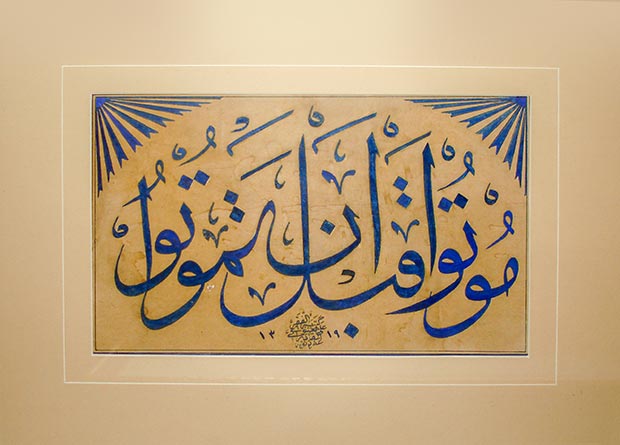 Ali Efendi Serif Faginovic, Calligraphic panel, Family Museum Hadzimejlic / Photo © Islamic Arts Magazine
Ali Efendi Serif Faginovic, Calligraphic panel, Family Museum Hadzimejlic / Photo © Islamic Arts Magazine
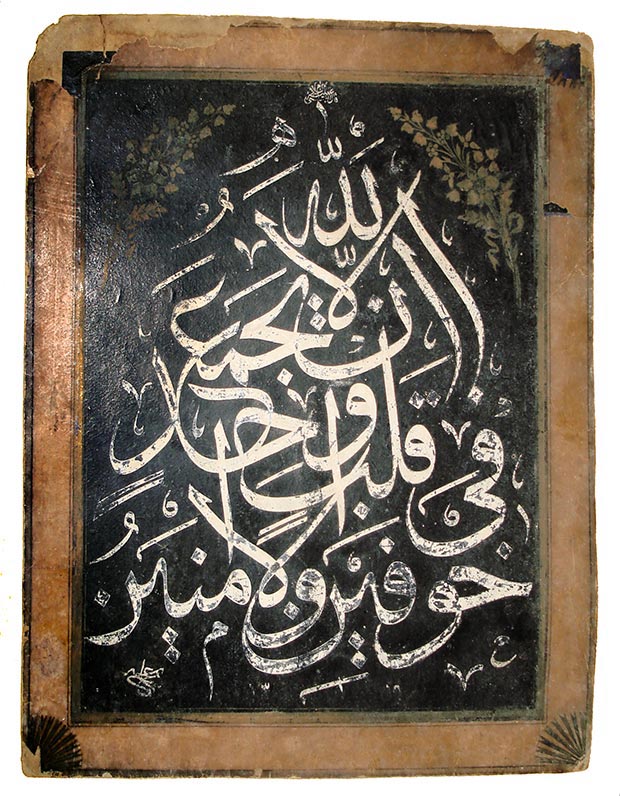 Ali Efendi Serif Faginovic, Calligraphic panel, Bosniak Institure, Sarajevo / Photo © Islamic Arts Magazine
Ali Efendi Serif Faginovic, Calligraphic panel, Bosniak Institure, Sarajevo / Photo © Islamic Arts Magazine
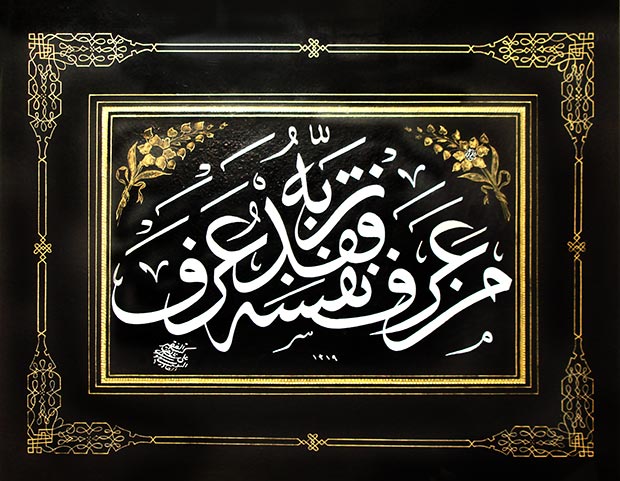 Ali Efendi Serif Faginovic, Calligraphic panel, Family Museum Hadzimejlic / Photo © Islamic Arts Magazine
Ali Efendi Serif Faginovic, Calligraphic panel, Family Museum Hadzimejlic / Photo © Islamic Arts Magazine
Comments
Add a comment